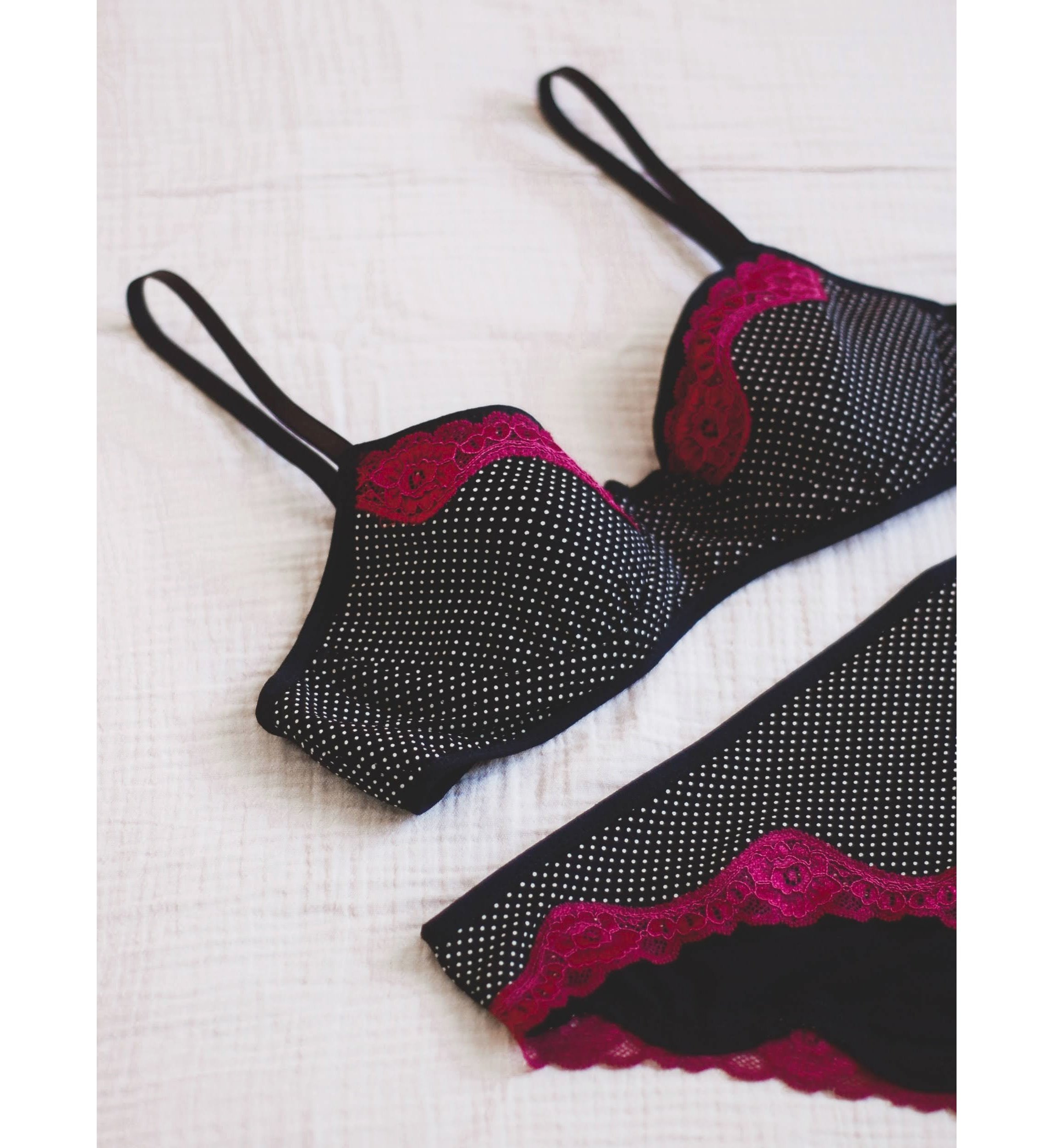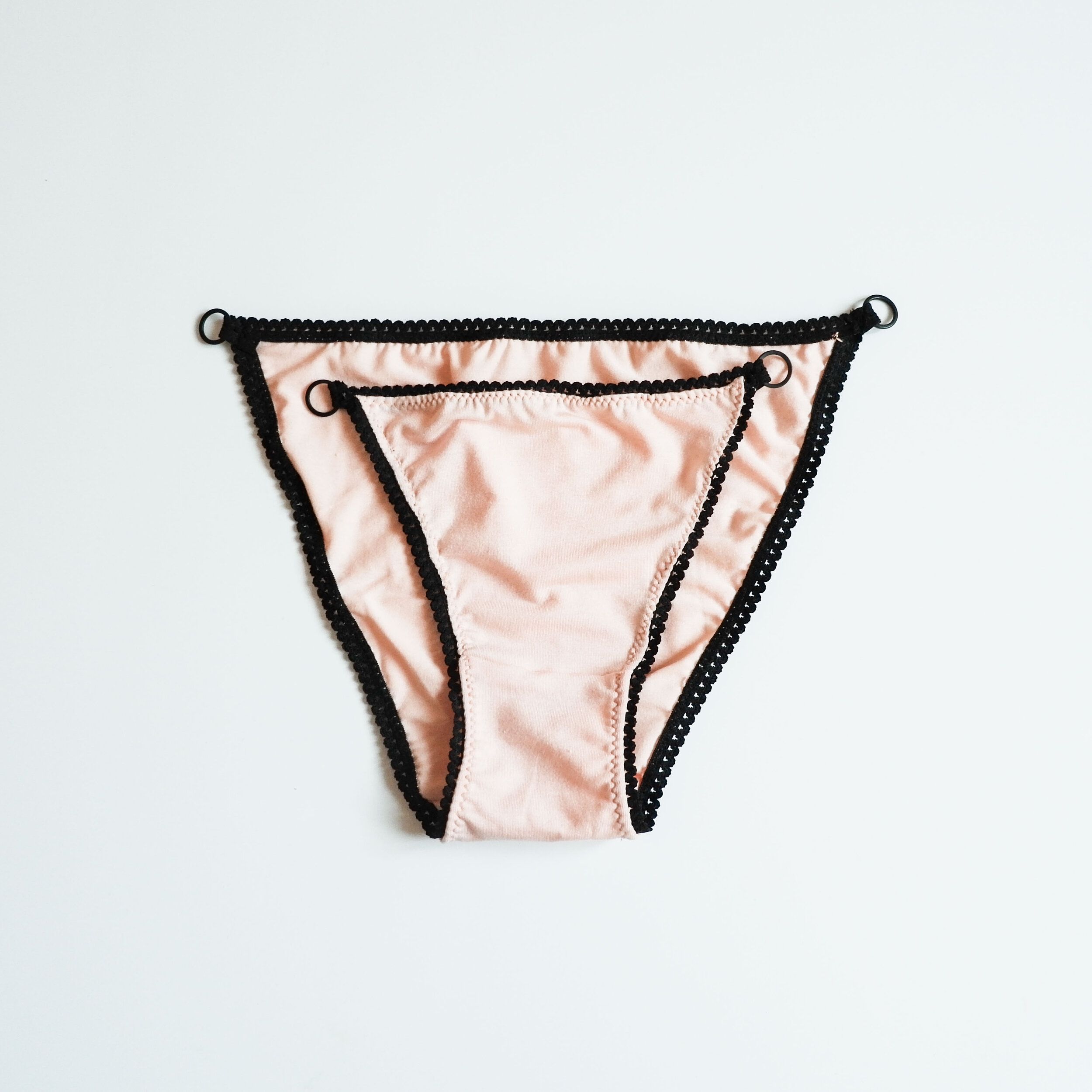The back and front pieces need their new seam allowance as well, add to both pieces. Note that my new crotch piece is only the half of the crotch actually. I’d recommend to cut this peiece on folded paper to have the full crotch piece, it’s easier to cut fabric that way.
One thing I didn’t alter was the rest of the seam allowances included in the pattern for the elastic. For my panties patterns I use 7 mm seam allowance that is included in the pieces, you use it for sewing lingerie elastics on the leg and waist openings and it is folded under once the elastic is sewn on. So if you want to have the same width of the crotch as you usually have in my patterns (once the lingerie elastic is sewn under) when using FOE that doen’t need any extra seam allowance you should take away this seam allowance on all the openings. I didn’t do it as I prefer my period panties to be a bit wider in the crotch area, I just feel more comfortable this way. Also the soft FOE I’m using is very comfortable so it’s not something that “digs in” while I wear my panties. But if you feel that this might be something you don’t like just go ahead and reduce all the pieces in the leg and waist opening areas.
So this is it with the pattern alteration, now let’s cut out the pieces.
La parte trasera y delantera necesitan sus nuevos márgenes de costura también, añade los 6 mm a las dos. Mi nueva pieza de entrepierna es solo la mitad y hay que cortarlo al doblez. Yo recomeiendo que lo cortes en doble de papel directamente para tener el patrón completo, así que más fácil cortar las piezas de tela.
Una cosa que no hice era cambiar márgenes de costura en el resto de la braguita. En mis patrones uso el márgen de costura de 7 mm que está incluido en las piezas para coser los elásticos de lencería en las aberturas de las piernas y la cinturilla, este márgen se dobla hacia abajo una vez cosidos los elásticos. Así que si quieres tener el mismo ancho de la entrepierna que sale normalmente en mis patrones (una vez cosidos los elásticos) si usas el bies elástico, deberías quitar este márgen de costura en las aberturas. Yo no quité nada en mis barguitas ya que prefiero que la entrepierna esté un poco más ancho en este caso, me siento más cómoda así. Además el bies elástico que uso es muy suave y no molesta nada al llevar las braguitas. Pero si crees que es algo que puede no gustarte puedes quitar los márgenes en todas las aberturas.
Así que ya estamos con los cambios de patrón, ahora vamos a cortar las piezas.



















































